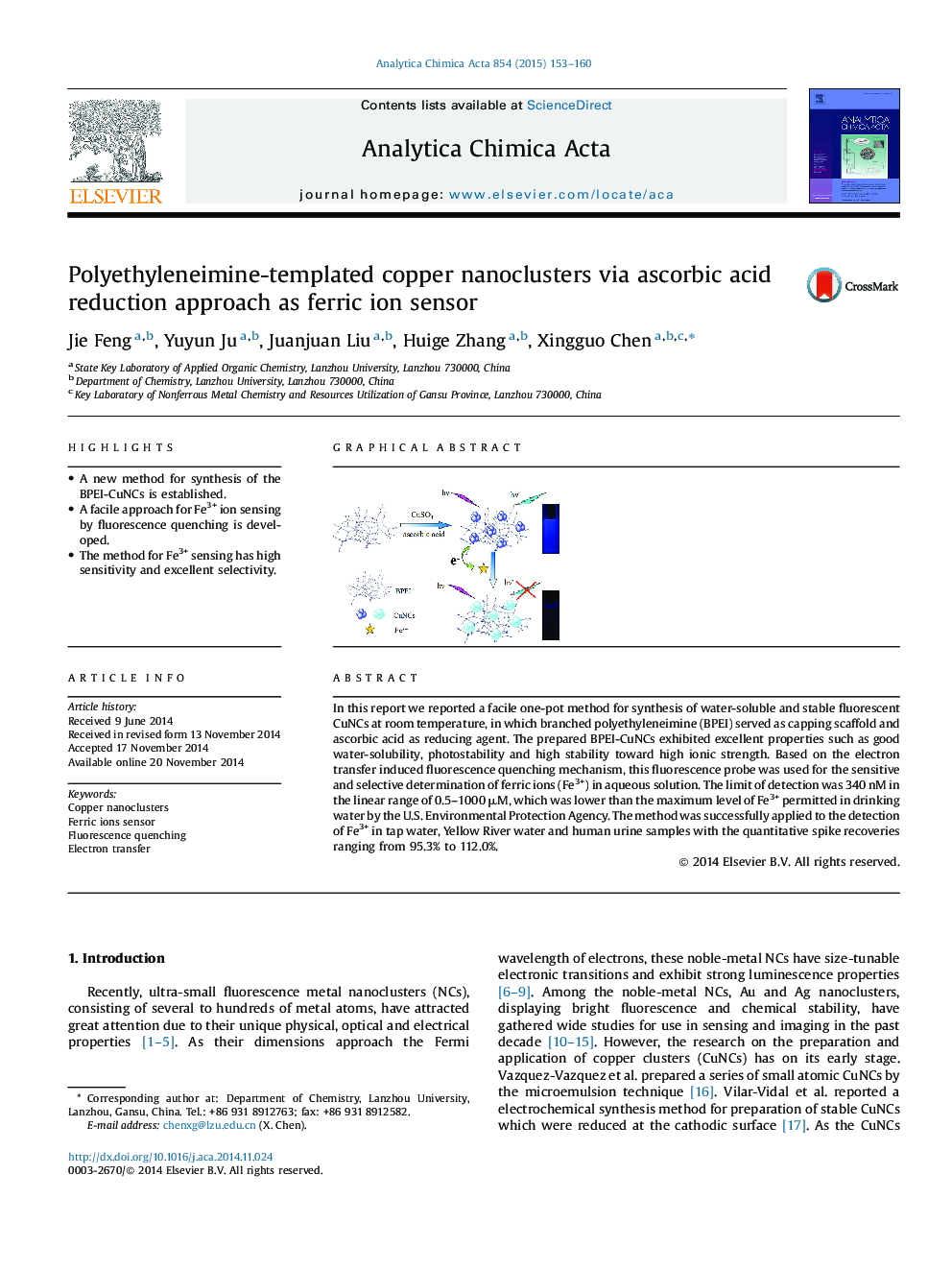| Article ID | Journal | Published Year | Pages | File Type |
|---|---|---|---|---|
| 1164275 | Analytica Chimica Acta | 2015 | 8 Pages |
•A new method for synthesis of the BPEI-CuNCs is established.•A facile approach for Fe3+ ion sensing by fluorescence quenching is developed.•The method for Fe3+ sensing has high sensitivity and excellent selectivity.
In this report we reported a facile one-pot method for synthesis of water-soluble and stable fluorescent CuNCs at room temperature, in which branched polyethyleneimine (BPEI) served as capping scaffold and ascorbic acid as reducing agent. The prepared BPEI-CuNCs exhibited excellent properties such as good water-solubility, photostability and high stability toward high ionic strength. Based on the electron transfer induced fluorescence quenching mechanism, this fluorescence probe was used for the sensitive and selective determination of ferric ions (Fe3+) in aqueous solution. The limit of detection was 340 nM in the linear range of 0.5–1000 μM, which was lower than the maximum level of Fe3+ permitted in drinking water by the U.S. Environmental Protection Agency. The method was successfully applied to the detection of Fe3+ in tap water, Yellow River water and human urine samples with the quantitative spike recoveries ranging from 95.3% to 112.0%.
Graphical abstractFigure optionsDownload full-size imageDownload as PowerPoint slide
